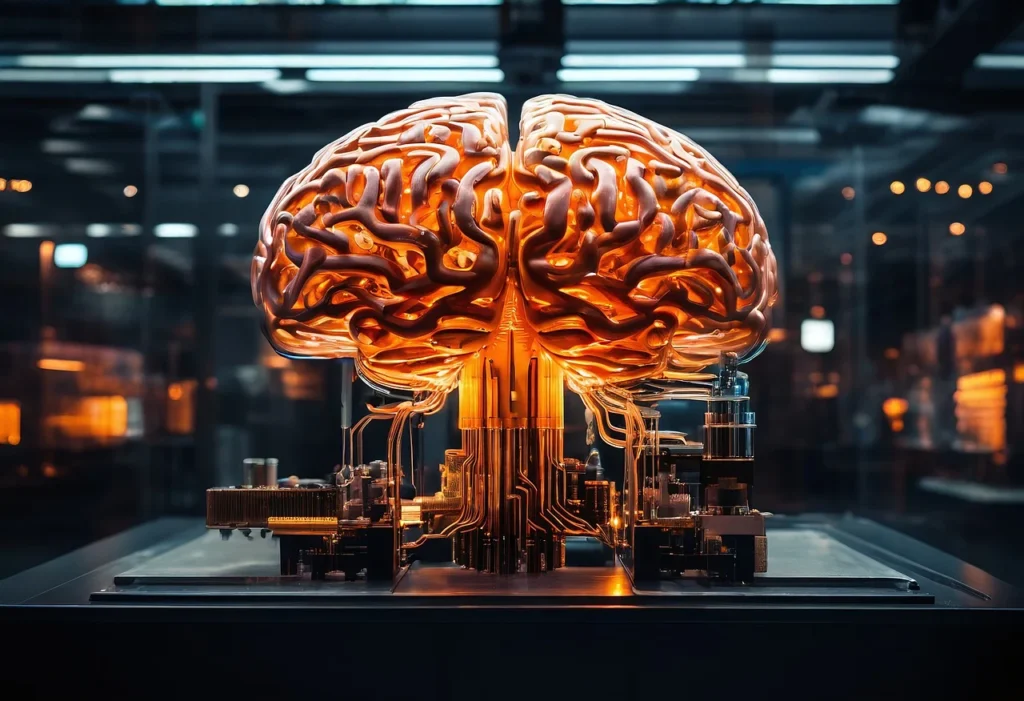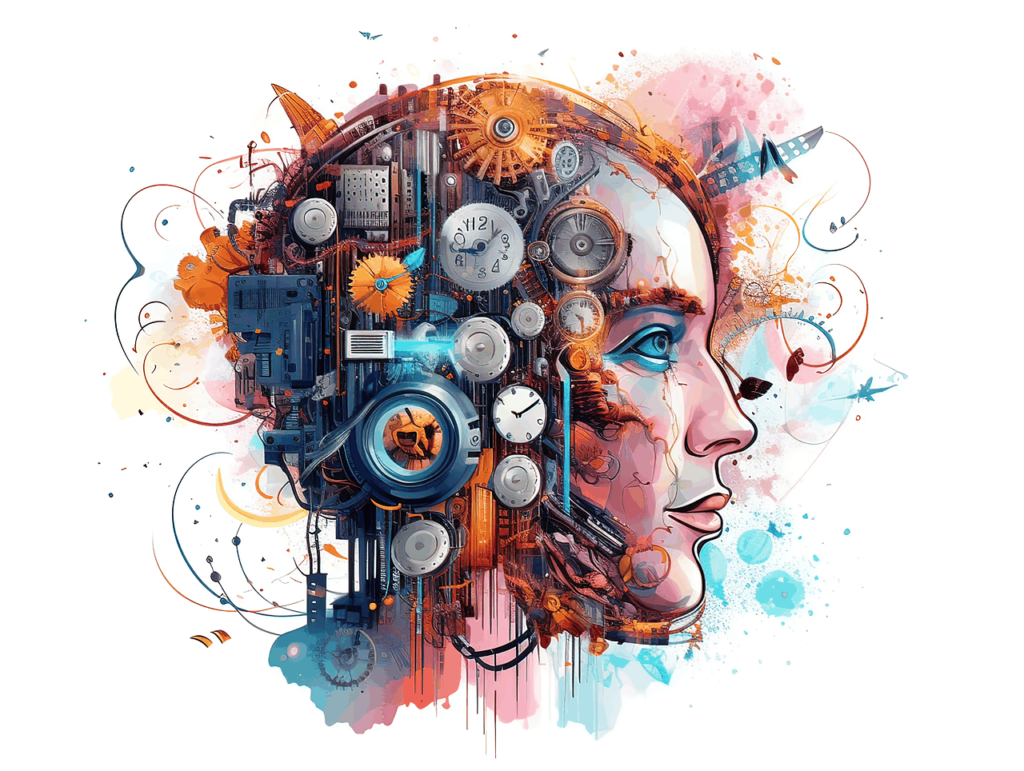The future of robotics technology is a fascinating realm filled with potential to revolutionize industries, enhance daily lives, and address some of the world’s most pressing challenges. As we advance in this age of innovation, robotics stands at the forefront, promising opportunities yet accompanied by challenges that must be navigated responsibly. This blog will delve deep into the introduction to robotics technology, current trends, opportunities, and challenges surrounding this transformative field.

What is Robotics Technology?
Robotics technology refers to the design, development, and use of robots—machines that can operate autonomously or semi-autonomously to perform tasks. These tasks range from everyday activities like household chores to complex industrial operations such as assembly line work and medical surgeries. Robotics technology integrates various fields such as artificial intelligence (AI), machine learning, engineering, and material sciences. These disciplines work together to create robots that can interact with their environment, make decisions, and learn from experiences. Over time, robots have evolved from basic mechanical devices into advanced, intelligent machines capable of executing a wide range of functions.
As industries increasingly adopt robotics technology, its impact on various sectors continues to grow. Robots are now a critical component in industries like manufacturing, healthcare, logistics, and even customer service. With the integration of AI and machine learning, robots can adapt to changing environments and improve their performance over time. This continuous evolution has made robotics an essential tool for enhancing efficiency, precision, and safety in many fields. Understanding the principles behind robotics technology is crucial for recognizing its transformative role in modern society and its potential to revolutionize how we live and work.
Current Trends in Robotics Technology
The landscape of robotics is ever-evolving. Let’s explore the groundbreaking trends shaping the future of robotics technology:
Collaborative Robots (Co-bots)
Collaborative robots, or co-bots, are designed to work directly alongside humans. Unlike traditional industrial robots that operate in isolated environments, co-bots are equipped with advanced sensors and safety features that enable seamless human-robot collaboration. Industries such as manufacturing, healthcare, and agriculture are adopting co-bots to optimize workflows, reduce manual labor, and create safer work environments. The versatility of co-bots makes them an essential tool for businesses aiming to improve efficiency and adaptability.
AI-Driven Robots
Artificial intelligence has empowered robots with capabilities like decision-making, problem-solving, and learning from data. AI-driven robots are pivotal in applications such as autonomous vehicles, warehouse automation, and personal assistants. These robots can perform complex tasks, adapt to changing circumstances, and improve their performance over time. The integration of AI into robotics continues to push the boundaries of what machines can achieve, making them invaluable assets across various domains.
Robotics in Healthcare
From surgical robots that perform minimally invasive procedures to robotic exoskeletons aiding patient rehabilitation, robotics is transforming healthcare. These technologies improve precision, reduce recovery times, and enhance patient outcomes. Additionally, robots are being used to automate hospital logistics, such as medication delivery and sanitation, ensuring efficient and sterile environments. The role of robotics in healthcare is expanding rapidly, addressing critical challenges and improving accessibility to medical services.
Swarm Robotics
Swarm robotics involves the coordinated operation of multiple robots working together to achieve a common goal. Inspired by nature, such as the behavior of ants and bees, swarm robotics is being utilized in applications like search-and-rescue missions, environmental monitoring, and large-scale infrastructure inspections. These systems offer robustness, scalability, and adaptability, making them a promising solution for tackling complex challenges in dynamic environments.
Sustainability in Robotics
As the world shifts towards eco-friendly solutions, robotics is no exception. Developers are focusing on creating energy-efficient robots, utilizing recyclable materials, and designing machines with minimal environmental impact. Sustainable robotics aims to reduce the carbon footprint of robotic systems, contributing to global efforts to combat climate change while maintaining technological progress.

Opportunities Offered by Robotics Technology
The future of robotics technology presents immense opportunities across diverse sectors:
Automation and Productivity
Robots can handle repetitive, dangerous, or labor-intensive tasks, significantly boosting productivity while reducing operational costs and human error. By automating mundane processes, businesses can allocate human resources to more strategic and creative roles, enhancing overall efficiency.
Advancing Healthcare
Robotics technology is enabling breakthroughs in surgery, diagnostics, and patient care. Surgical robots provide unmatched precision, reducing complications and speeding up recovery times. Similarly, robotic prosthetics and exoskeletons empower individuals with disabilities, enhancing mobility and independence. These innovations are transforming the healthcare industry by delivering better outcomes and improving quality of life.
Enhancing Education
Educational robots are revolutionizing learning by making STEM fields accessible and engaging for students. These robots serve as interactive tools for teaching programming, engineering, and problem-solving skills. By introducing robotics at an early age, educators can inspire the next generation of innovators and prepare them for a tech-driven future.
Disaster Response
Robots are invaluable during disasters, assisting in search-and-rescue missions, clearing debris, and delivering supplies in hazardous areas. Equipped with sensors and cameras, these machines can navigate dangerous environments and provide critical data to aid rescue operations. Their ability to perform tasks that are too risky for humans makes them indispensable during emergencies.
Space Exploration
From Mars rovers to lunar missions, robotics plays a critical role in exploring the unknown. Robots are equipped with advanced instruments to conduct scientific experiments, collect samples, and transmit data back to Earth. By overcoming the challenges of extreme environments, robotics technology continues to expand our understanding of the universe and unlock new frontiers in space exploration.
Challenges in Robotics Technology
While robotics offers immense potential, it also comes with challenges:
High Costs
Developing and implementing advanced robotics systems require significant financial investments. The high costs associated with research, development, and maintenance can limit accessibility, particularly for small and medium-sized enterprises. As technology matures, efforts are underway to reduce costs and make robotics more affordable.
Ethical Concerns
The deployment of robots raises ethical questions about privacy, job displacement, and the potential misuse of autonomous systems. Balancing innovation with ethical considerations is essential to ensure that robotics technology is developed and used responsibly. Addressing these concerns requires collaboration between policymakers, technologists, and society at large.
Technical Limitations
Despite advancements, robots still face technical hurdles such as limited battery life, navigation issues, and the inability to handle complex tasks. Overcoming these limitations requires continued research and innovation to improve robot design, functionality, and adaptability.
Regulatory and Safety Issues
Governments and organizations must establish regulations to ensure the safe and ethical use of robotics technology. Creating standardized protocols for robot deployment, operation, and maintenance is critical to prevent accidents and misuse. These regulations must also address concerns related to data security and user privacy.

Challenges Facing the Future of Robotics Technology
As robotics technology advances, several challenges need to be addressed. These challenges include ethical concerns, economic impacts, and technical limitations. Let’s explore them in detail.
Ethical Concerns: Privacy and Autonomy Issues
One of the primary challenges facing robotics technology is the ethical dilemma regarding privacy and autonomy. As robots become more integrated into our daily lives, questions about data privacy, surveillance, and the autonomy of robotic systems arise. Robotics technology is increasingly used in environments that require intimate interactions with humans, such as healthcare and personal assistance. This raises concerns about how much control these robots should have over their decisions and actions.
There is also the issue of ensuring that robots respect privacy. Many advanced robots collect data, whether it’s from monitoring health data in hospitals or interacting with people at home. Securing this data and ensuring robots don’t misuse it is essential in maintaining trust in robotics technology.
Economic and Workforce Impacts: Job Displacement and Reskilling
Robotics technology has revolutionized manufacturing and automation, leading to greater productivity and efficiency. However, the widespread adoption of robotics technology also raises concerns about job displacement. As robots take over repetitive or dangerous tasks, many jobs traditionally held by humans could become obsolete.
This brings us to the need for reskilling and upskilling the workforce. Instead of fearing job losses, society must focus on preparing workers for new roles that will emerge as a result of robotics technology. These new roles may include jobs in robotics programming, maintenance, and AI development. It is crucial to invest in education and training to ensure the workforce is prepared for these changes.
Technical Limitations: Hardware and Software Constraints
While robotics technology has made great strides, there are still significant technical limitations that hinder its full potential. Current robots are limited by hardware and software constraints, including power supply, mobility, and the complexity of human interaction. Many robots today require large batteries and have restricted mobility, making them unsuitable for certain tasks.
Additionally, software and artificial intelligence (AI) systems used in robotics are still not perfect. While robots can perform specific tasks efficiently, they often struggle with tasks that require critical thinking, emotional intelligence, or adaptability to unexpected situations. Advancements in both hardware and software are necessary to overcome these limitations and expand the scope of robotics technology.

Future Prospects of Robotics Technology
The future of robotics technology holds exciting possibilities. As advancements continue, robotics will play a major role in sustainable development, smart cities, and various emerging technologies.
The Role of Robotics in Sustainable Development: Emerging Technologies Shaping the Future
Robotics technology is making significant strides in contributing to sustainable development. In industries like agriculture, renewable energy, and waste management, robots are helping reduce environmental impact. For example, autonomous robots can manage renewable energy systems, monitoring and optimizing energy usage to improve efficiency. In agriculture, robots can help with tasks like precision farming, reducing waste and improving crop yields.
Waste management also benefits from robotics technology. Robots are being used to sort and recycle waste more effectively, reducing the amount of waste that ends up in landfills and promoting recycling.
The Vision for Robotics in Smart Cities
As urbanization increases, the development of smart cities has become a focal point for many governments and tech companies. Robotics technology will play a significant role in transforming cities into more efficient, sustainable, and livable environments.
From autonomous delivery systems to robots used in urban planning and construction, the possibilities are endless. For example, drones and autonomous vehicles will help with transportation, reducing traffic congestion and carbon emissions. Robots will also be used in infrastructure maintenance, monitoring the condition of roads, bridges, and buildings to ensure safety and timely repairs.
Conclusion: Recap of Opportunities and Challenges
Robotics technology presents incredible opportunities, but it also comes with challenges that need to be addressed. Ethical concerns, economic impacts, and technical limitations must be carefully managed as robotics technology evolves.
The future prospects of robotics technology, including its role in sustainable development and smart cities, are incredibly exciting. The key to harnessing the potential of robotics lies in a balanced approach that addresses its challenges while focusing on innovation and progress.
As we move forward, it will be essential to prioritize education and reskilling for the workforce to ensure that society benefits from the advancements in robotics. Additionally, ethical frameworks must be developed to ensure privacy, autonomy, and fairness as robots become an integral part of our daily lives.
Frequently Asked Questions (FAQs):
What are the current trends shaping robotics technology?
Current trends in robotics technology include the integration of AI and machine learning, industrial automation, and robotics in healthcare and transportation. AI allows robots to learn and adapt to their environment, improving their performance and decision-making capabilities. In healthcare, robots are being used for surgeries, diagnostics, and rehabilitation, while in manufacturing, robots streamline production processes and improve efficiency.
How does robotics technology impact the workforce?
While robotics technology can displace some jobs, it also creates new opportunities. Many jobs in robotics programming, maintenance, and AI development are expected to grow. As robots take over mundane and repetitive tasks, humans will be able to focus on more creative and strategic roles. Reskilling and upskilling are key to ensuring workers are prepared for these new roles.
What ethical issues arise with robotics technology?
Several ethical concerns surround robotics technology, including privacy, autonomy, and decision-making. As robots become more integrated into society, it’s essential to ensure they are designed with ethical considerations in mind, such as protecting personal data and making fair decisions. Ethical guidelines will need to evolve alongside technological advancements to address these concerns.
What role does robotics technology play in sustainable development?
Robotics plays a crucial role in sustainable development by improving energy efficiency, waste management, and resource conservation. Autonomous robots can optimize renewable energy usage, reduce environmental impact in agriculture, and enhance waste sorting and recycling processes. Robotics technology is also contributing to the development of more sustainable industrial practices, helping to reduce carbon footprints.
What are the challenges in advancing robotics technology?
Advancing robotics technology faces challenges related to hardware and software limitations, as well as ethical and societal concerns. Robots need more advanced mobility, power, and adaptability to be fully effective. Additionally, the ethical implications of automation, privacy, and job displacement must be addressed to ensure a smooth integration of robotics into society.


